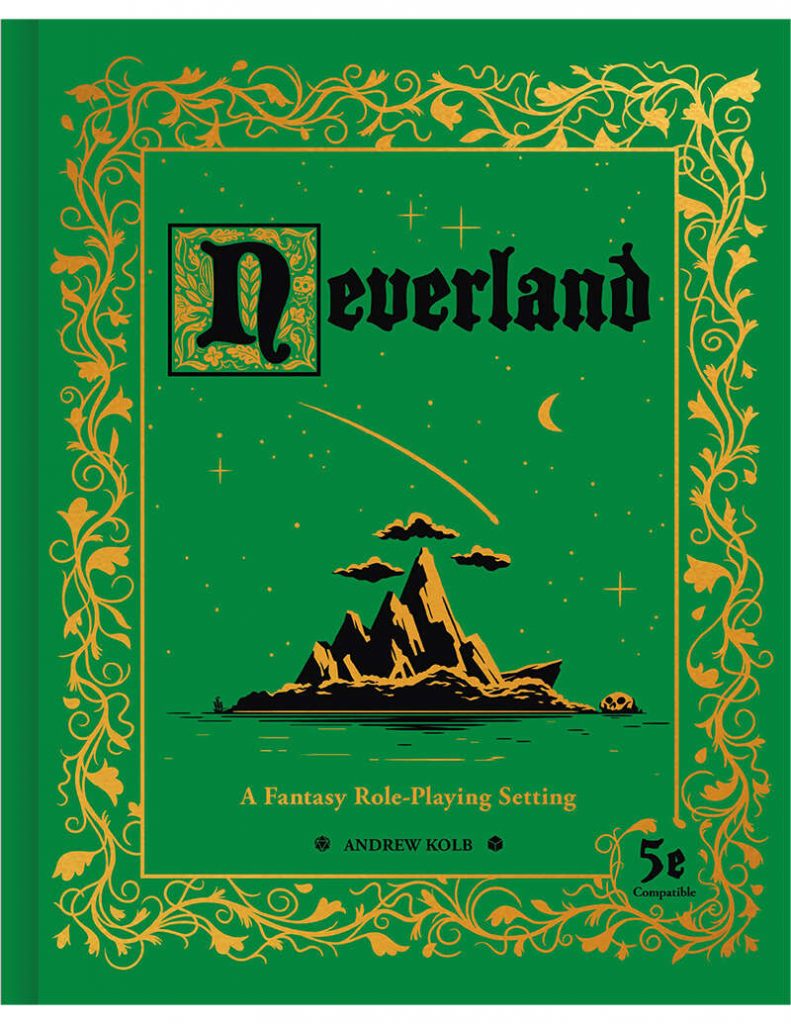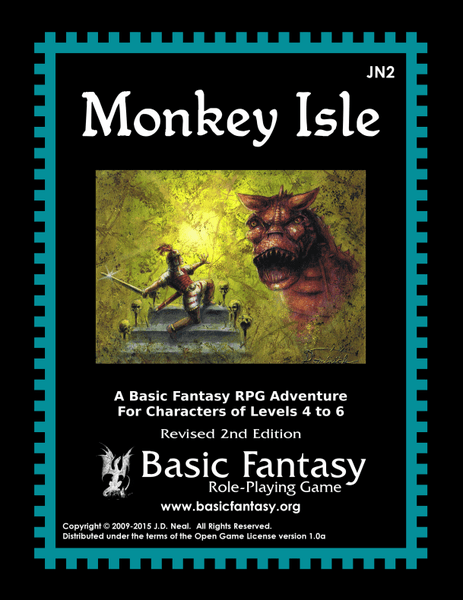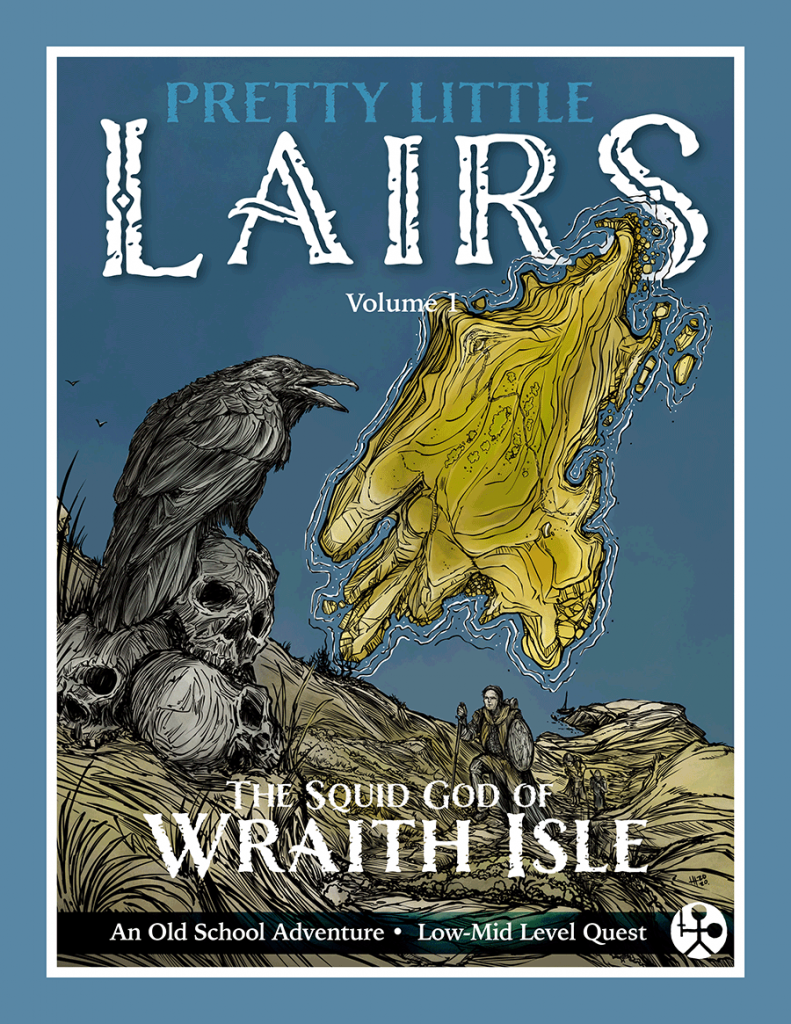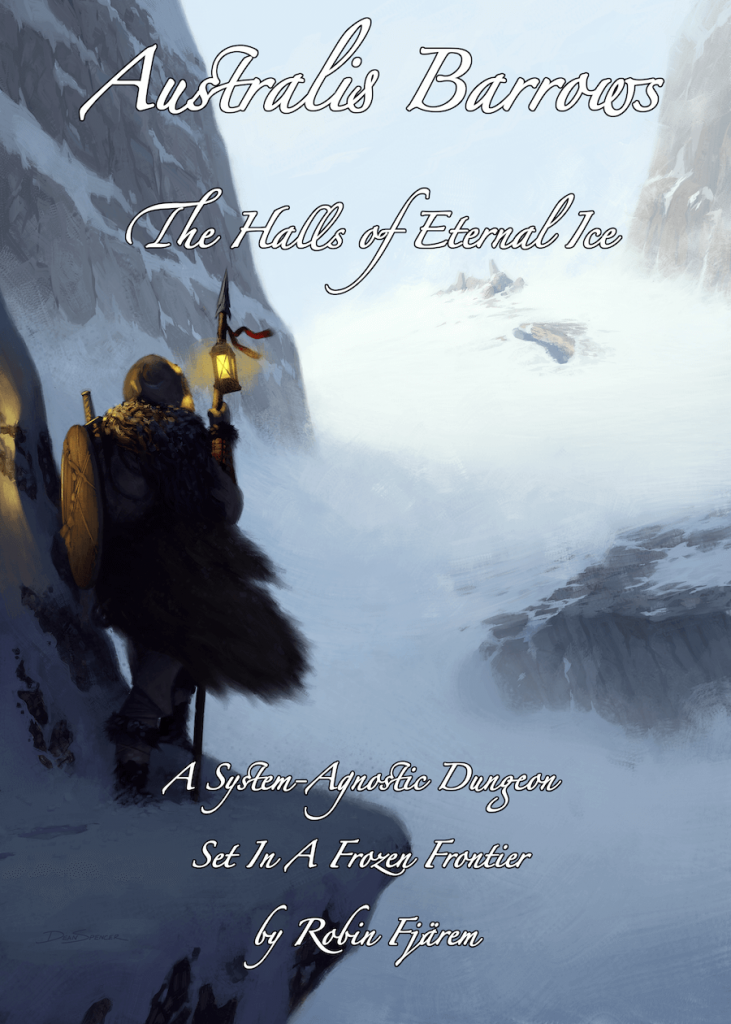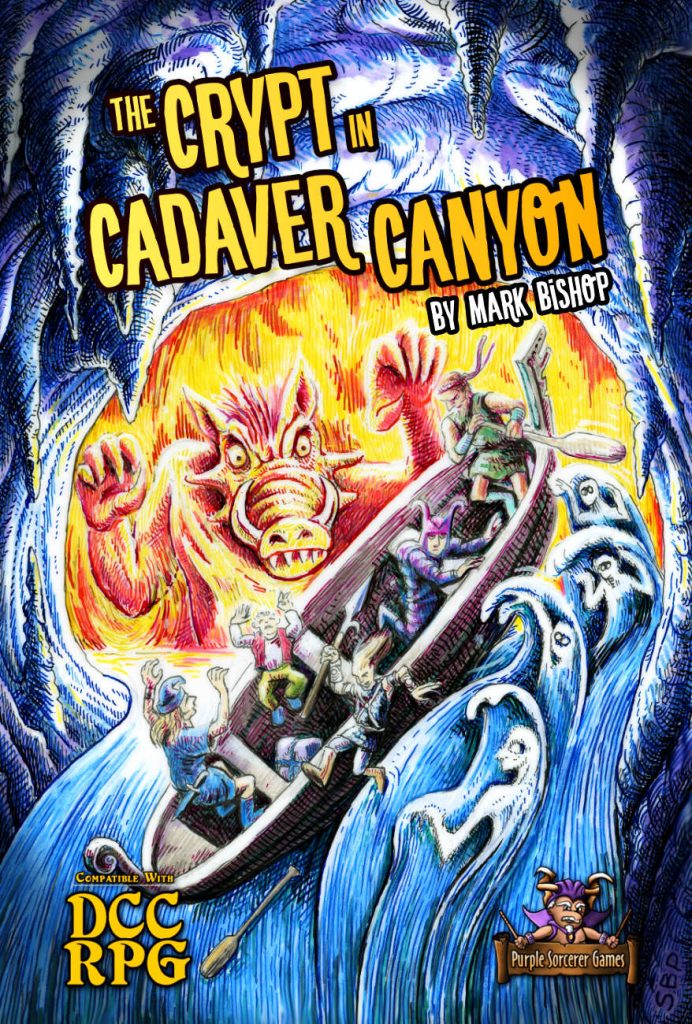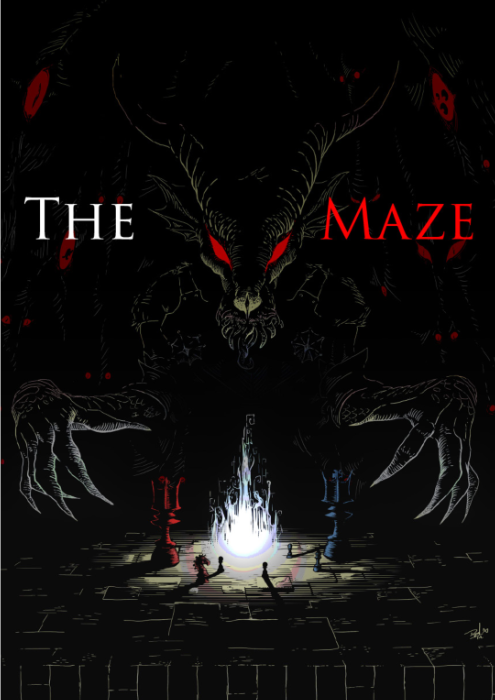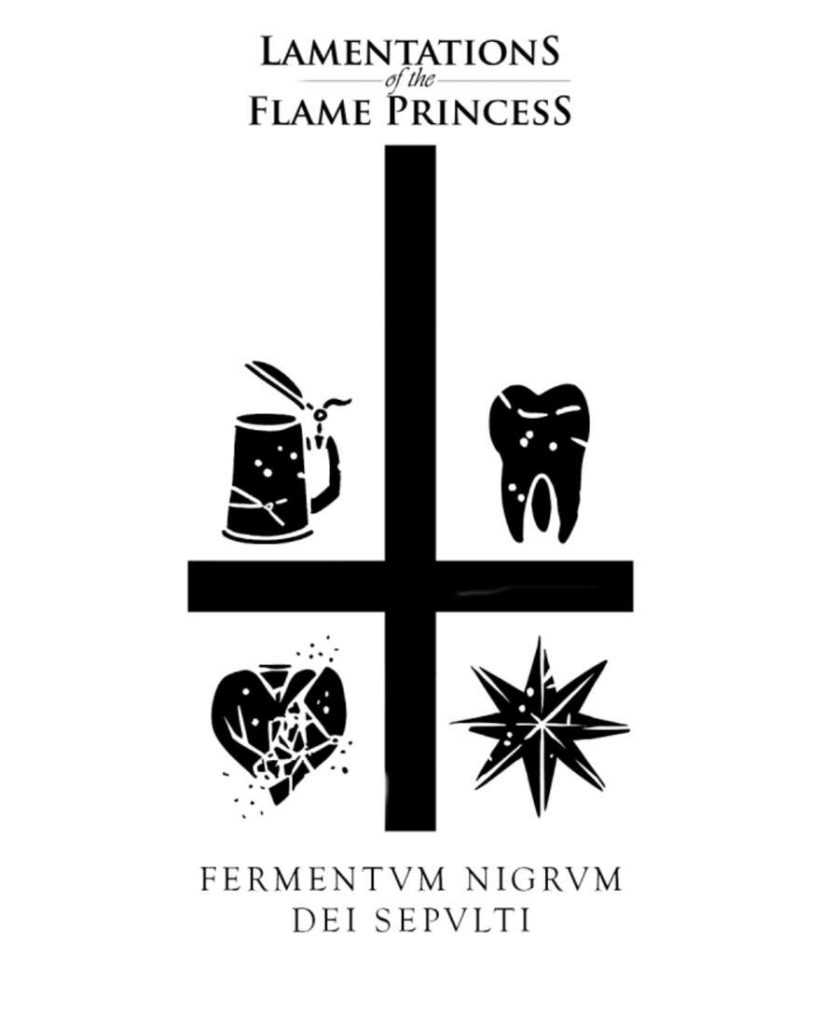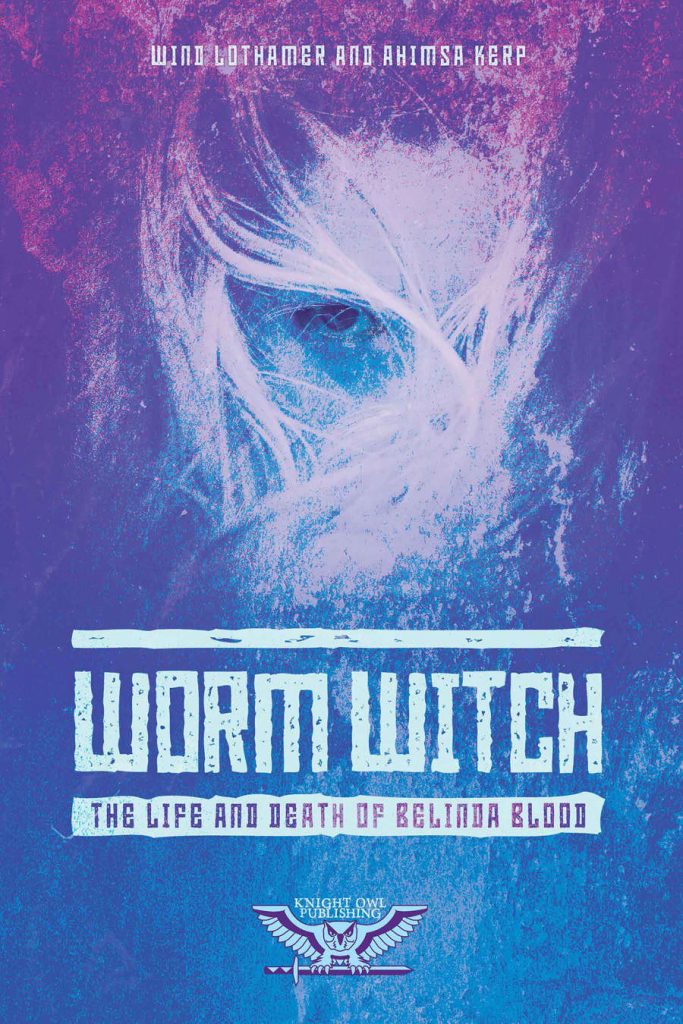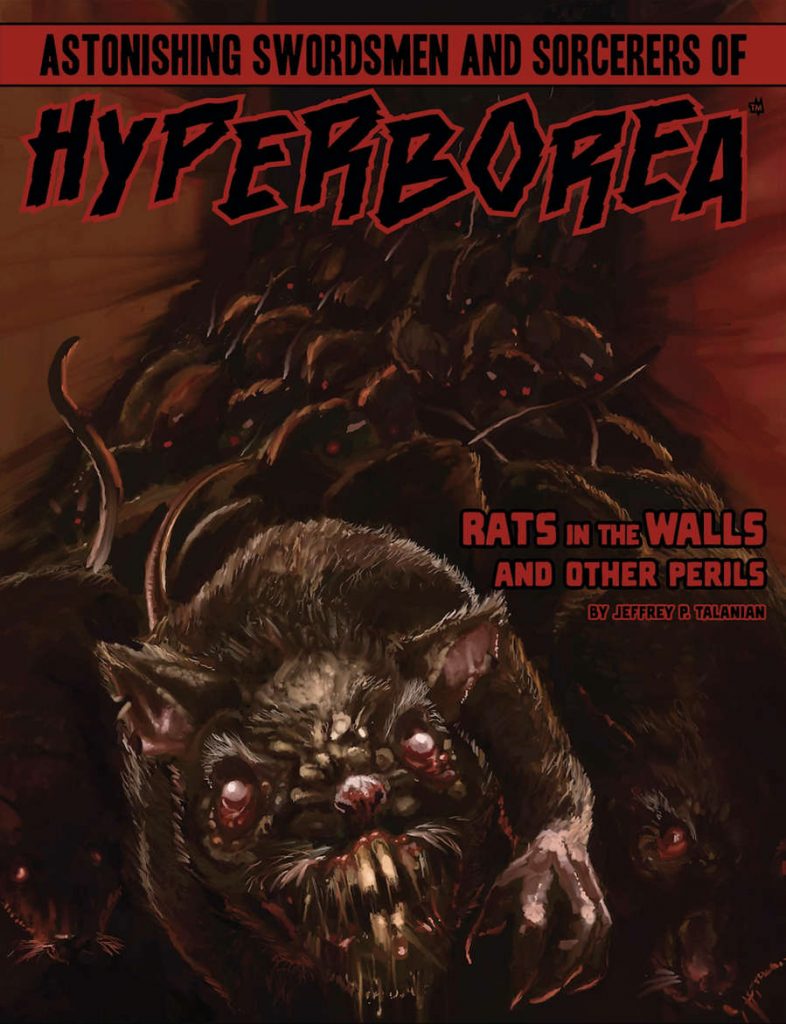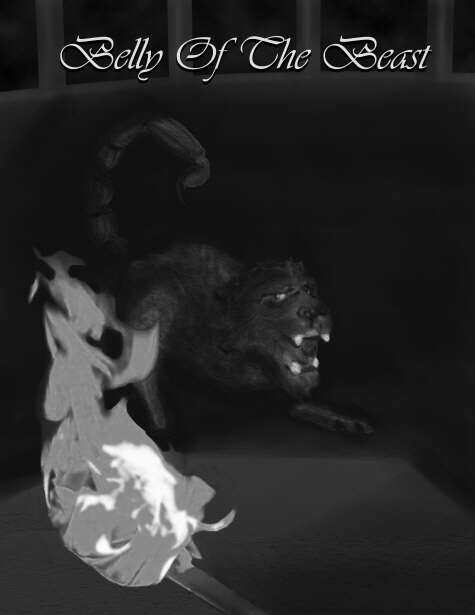
By Paul Elkmann, Geoff Dale Spellbook Games Portal to Adventure Levels 1-2
[…] Adventurers have been captured and are dropped into an underground area housing a fearsome beast, their heads covered and their hands bound. A secret ally has hidden equipment in the dungeon, if Adventurers can find it, and there are means to escape. The Adventurers start with nothing so they have to think creatively about both weapons and tactics. […]
This eighteen page adventure contains a five level dungeon with about 77 rooms. While it is is more interactive than the usual fare, at least of late, its text is devoted to mechanics over description and I suspect it is a son of a bitch in the difficulty department.
There is a subgenre of adventures where the party gets chucked in to the dungeon, at first level, without any equipment. This is one of those. And the adventure is interesting to me because its text serves as classic example of several problem areas with writing adventures.
First, there is the issue of making rolls to do common things. A classic example is the making of a skill roll to, say, walk down a hallway. In this adventure you get make a saving throw roll to stand up when you fall down. Yes, the second thing in the adventure is a saving throw roll to stand up. You get chucked in to the dungeon and make a save or take 1d3 damage. (If Portal to Adventure is an actual oD&D clone then ¾ of the party is now dead …) and then you have to make another one when you try to stand up. In another place you have to make a saving throw to remove the spear from a statues hands. No trap. Nothing bad happens. You just need to make the roll in order to actually remove the spear. I recall many, many advice columns and articles, in the 3e era, trying to convince DM’s that the party didn’t need to actually make a roll to do common things like ride a horse normally, and so on. I guess it didn’t take. I’ve never really understood this, or the counter-advice columns that encouraged DM’s to “get the party rolling some dice early in the session.” There’s this kind of meaningless dice rolling that goes on in adventures that just doesn’t make sense to me. Why roll the dice to get some boring bit of info? To stand up? To get the key bit of info? We know the DM is going to fudge anyway, so why does it exist? I always imagine the probability where no one makes their roll and, while the entire party having survived the fall, can’t make a common roll to stand up and spend the rest of the adventure wriggling around like fish on the floor. Ah, Good Times, Good times … so, prepare yourself for an endless number of meaningless dice rolls in this adventure.
And then there’s traps. Lots of traps. LOTS of traps. None with any warning. This highlights two problems. The first is the way “hidden” traps slow down the game. If the trap has no warning for a clever player to pick up on then the traps springs and players dies/take damage/etc. Players then begin searching for traps. Making roll after roll after roll after roll after roll. It becomes tedious. It slows the game down. A random pit trap in the middle of a hallway is almost always bad design. The second issue is that aforementioned “lack of clue.” When the DM drops a hint, of, say, a discolored floor, then the smart party will follow up, investigate, and discover the trap. It’s interactive. The party and DM are going back and forth. That’s D&D. Without warning of trap the DM simply calls to the players to make a save and take damage. Mindless dice rolling. Bad D&D.
There are other things wrong with this. Light not mentioned on the map, or in big rooms that you can see from far away. Mislabeled map, etc. But, the room writing style is worth considering as a good example of a style gone bad.
Ok, out of the way up front, any writing style can be good as long as it makes it easy for the DM to effectively locate/scan for information. A small subgenre of room descriptions are “Sticky”, like Old Bay in Fight On!, and don’t need much scanning. With that in mind, I’m now going to talk about a specific bad style. Or, at least, an instance that is bad of a neutral writing style.
This style might be given an example of “This is the first thing in the room. This is everything about the first thing in the room. This is the second thing in the room. This is everything about the second thing in the room. This is the third thing in the room. This is everything about the third thing in the room. (and so on.)”
This style can make scanning the room difficult. The party walks in. What do they see? Room nine, in this adventure, is a great example. It has two paragraphs, spread across two pages (which is, in and of itself, a bad layout thing. Guy Fullerton has a great write up on why in his series of layout articles.)
9. Brick Walkway. The flooring here is brick with a 10 FT-diameter white stone cicle in the floor surrounding a lion’s head. There are dark red smears on the floor at the south end. A 3-ft brick wall is along the east side with a 15 FT drop from the top to the sany area to the east. A fresco inlaid in the west wall depicts two Manticores fighting in a clearing of a palm jungle. A lit oil lamp is attached to the [page break] west wall by a brass bracket. Two ordinary human-sizex skeleton are on the floor (three large bones can be used as 1d3 clubs) with gnaw marks. [Then the second paragraph.]
Skeletons last. But that’s likely to be the FIRST thing the party cares about. You, the DM, are digging through this text trying to describe the room to the party when they come upon it. You don’t know it’s lit till near the end. The skeletons (and arguably the light) are the first things the party will want to know about. You have to dig and dig and dig to find the things needed. Better keyword bolding would have helped the DM pick out information, or better use of white space/breaks, or a different style altogether. For beginner writers I think it’s easier to use a style that gives a general overview up front, without a lot of detail and then follows up, with bolded keywords and the like, with more information about the items. “You see a lit room with frescoes on the wall and floor, a low brick wall, and two skeletons near it.” The party can then follow up with questions about the lighting, skeletons, frescoes, wall, etc. Interactivity between the party and DM. The soul of D&D.
Anyway, this thing DOES have a decent number of things to play with in it. Statues with heads to lift off, quicksand to play with, and not TOO many creatures, maybe a dozen encounters total? The writing in the rooms is confused, the adventure is probably too difficult for Level 1’s, especially when they can’t retreat (but I’m judging it by B/X standards, not by the standards of the system it’s written for, even though it implies its OD&D like.) And, the writing style is a little boring, using boring words and devoting the bulk of description to facts and mechanics rather than interesting descriptions. Evocative, terse, well organized, interactive. That’s what an adventure should be. Better than the overwritten modern stuff, but “at least its not over written” is not exactly high praise.
This is $1 at DriveThru. There’s no preview. Adventures should have previews, showing some rooms, so we know what to expect before we buy things.
https://www.drivethrurpg.com/product/329159/Belly-of-the-Beast?1892600

